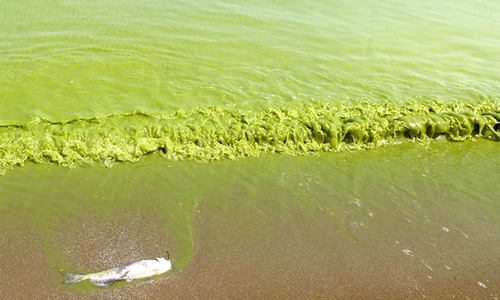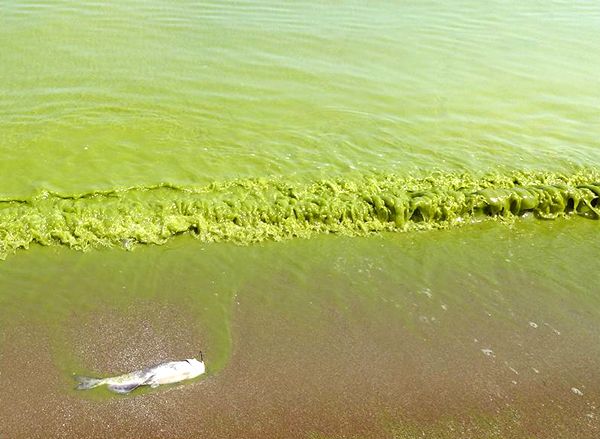
Toledo Water Ban Lifted, But Is the Water Safe and What Caused the Toxic Algae Bloom?

The City of Toledo issued a “Do Not Drink” advisory to more than 400,000 residents last weekend after chemical tests confirmed the presence of unsafe levels of the algal toxin Microcystin in the drinking water in three counties in Ohio and one in Michigan.
Last night on MSNBC’s the Ed Show, Ohio Rep. Marcy Kaptur and Dr. Jeffrey Reutter, director of Ohio Sea Grant College Program at Ohio State University, discussed the possible causes, including farm fertilizer runoff and sewage treatment plants.
“In order to solve this, we have to reduce the amount of phosphorus leaving our farm fields, coming out of our sewage treatment plants, failing septic tanks … The biggest source in the Maumee River, because that river drains four and a half million acres of agricultural land, is agriculture runoff,” said Reutter.
Also speaking on this issue from the Toledo area is Sandy Bihn, executive director of Lake Erie Waterkeeper. She provided me this statement this morning:
The heroes of the devastating Do Not Drink Toledo’s water are the Toledo, Oregon, Carroll Township and Ottawa County water plant operators who took it upon themselves to voluntarily test for the toxin microcystin. Last year, Carroll Township, a city that draws water from Lake Erie, issued a Do No Drink the Water advisory. There was an outcry from water plant operators for federal and state microcystin standards, and testing and treatment guidelines. But, nothing happened. The federal government and the state of Ohio needs to determine what the safe drinking water standard is for microcystin rather than relying on the World Health Organization. For example, the state of Minnesota has a standard of .041 parts per billion, but the World Health Organization’s standard is 1.0 parts per billion.
The Ohio Environmental Protection Agency with the help of the U.S. Environmental Protection Agency needs to create a source water protection plan under the Safe Drinking Water Act for the Toledo drinking water intake. This would put forth a plan to reduce the algae sources of the Toledo drinking water intake. The International Joint Commission has also recommended creating a plan for a total maximum daily load for phosphorus reductions in the western basin of Lake Erie. These programs need to begin now.
You Might Also Like
Toxic Algae Bloom Leaves 500,000 Without Drinking Water in Ohio
Groundbreaking Settlement Ends Uncontrolled Oil Leaks at Eight of Nation’s Biggest Dams
Groundwater Disappearing Much Faster Than Lake Mead in Colorado River Basin

 233k
233k  41k
41k  Subscribe
Subscribe 
